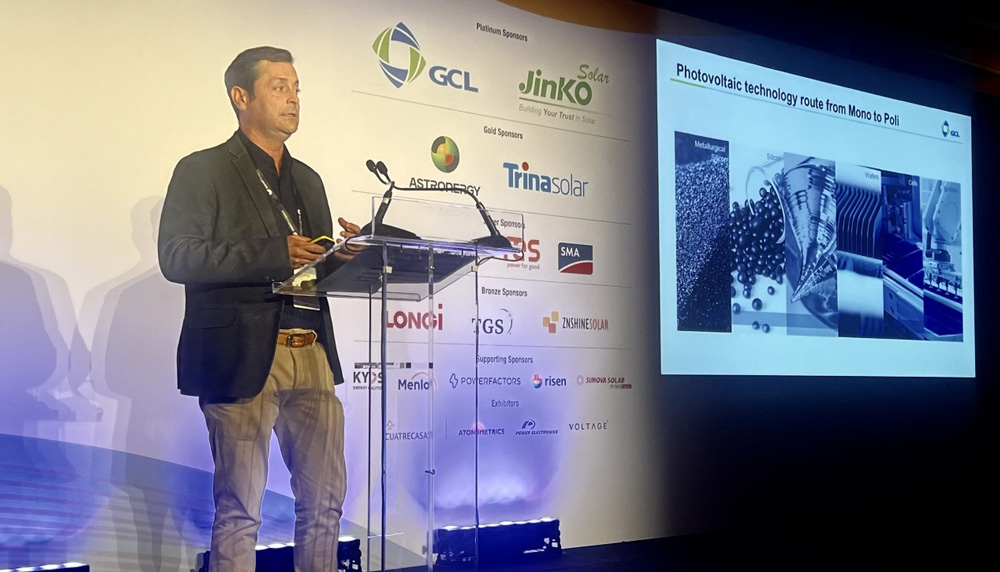On December 9, Beijing time, China's privately owned company, Landspace, achieved a significant milestone with the successful launch of its ZQ-2 II Remote Three Launch Vehicle. The launch took place at the Jiuquan Satellite Launch Center in western China. This one-rocket, multi-satellite commercial mission resulted in the deployment of three geosynchronous satellites into their designated orbits. Notably, one of these satellites, the Honghu II, carried perovskite modules developed by GCL Perovskite, marking a significant advancement in space testing of solar technology.
GCL Perovskite has equipped the Honghu II satellite with two 10cm by 10cm perovskite single-junction modules. The primary objective of the space test mission is to validate the performance, stability, and reliability of these perovskite modules in the demanding space environment. Data collected from the mission will be crucial for future practical applications of perovskite modules in space, including the construction of large-scale space power plants.
.jpg)
Perovskite modules offer several advantages that make them highly suitable for space operations. They are lightweight and flexible, allowing for versatile deployment. Additionally, perovskite modules exhibit exceptional tolerance to high-energy particle radiation, making them an ideal choice for the harsh conditions of outer space. Furthermore, the absence of water and oxygen in the vacuum space environment eliminates two major environmental threats to perovskite modules. Consequently, conducting empirical studies on perovskite modules in space is a vital step in transitioning this promising technology from the laboratory to practical applications in space scenarios, including the development of large-scale space power plants.
“In a significant space test, GCL's perovskite module has been successfully deployed into space aboard the Honghu II satellite, marking a remarkable achievement in scientific and technological innovation.” Zhu Yufeng, President of GCL Group, emphasized the importance of advancements in aerospace, stating that “it contributes to national development and strategic international competition. This follows Landspace's previous successful launch of the world's first LOX/LCH4 rocket in July. The collaboration between these two cutting-edge technologies represents a demonstration of scientific and technological prowess in both the aerospace and new energy sectors. Furthermore, it serves as a valuable endeavor to address industry gaps and effectively test the research and development achievements of GCL and Landspace.”
Dr. Fan Bin, Chairman of GCL Perovskite, highlighted GCL's recent certification of an 18.04% photovoltaic conversion efficiency record for a 2 square meter perovskite single junction module and said, “many laboratories and research institutes have published new perovskite efficiencies on smaller sizes, However, GCL believes that size is the foundation of efficiency. Commercialization of perovskite technology will only be achieved with substantially higher efficiency over larger modules. GCL has achieved a significant milestone with a 26.17% efficiency certification on a 279mm×370mm tandem module, making it the world's first practical perovskite tandem module and a crucial step towards perovskite technology's industrialization. Perovskite modules have demonstrated greater stability than crystalline silicon when exposed to space rays. However, their response to extreme temperature fluctuations in the space environment still requires further verification.”
“In the realm of space applications, perovskite demonstrates exceptional promise due to its high efficiency and sensitivity to water vapor elimination. This characteristic eliminates the threat posed by water vapor in space. Furthermore, perovskite’s high efficiency allows for the development of significantly more efficient satellite power devices compared to Gallium Arsenide (GaAs) cells at a lower cost. By equipping high-efficiency, low-cost perovskite modules, satellites can be equipped with higher power capabilities, enabling enhanced services.” He added.
Looking ahead, GCL aims to continuously monitor the efficiency, stability, and other parameters of perovskite modules in space. This will be achieved through real-time transmission of relevant performance data from the modules launched into space. By accumulating valuable experience in space energy development, GCL seeks to pave the way for further exploration in this field.
As technology matures and the market evolves, perovskite is poised to become a pivotal driver of global energy transformation. As an industry leader, GCL remains committed to investing in research and development. Additionally, GCL will continue to explore diverse validation scenarios to unlock the full potential of next-generation PV technology. Through these efforts, GCL aims to provide innovative "space solutions" for the new power system.












